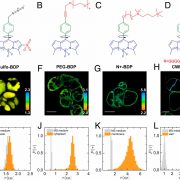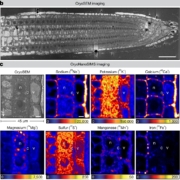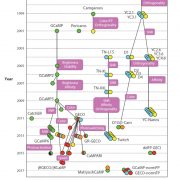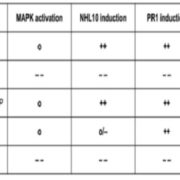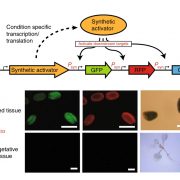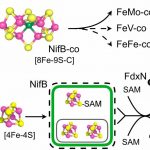Review: Design and engineering of advanced plant optogenetics systems (TIPS)
Review: Design and engineering of advanced plant optogenetics systems
 Optogenetics uses light-sensitive proteins to trigger specific outputs in the cell in response to particular wavelengths of light. Many optogenetic systems use chimeric proteins that contain different sensor and effector domains; with this, it is possible to use light to modulate DNA-binding activity, gene expression, or protein localization. An example is the use of PhyB-PIF3 in combination with GAL4 to generate a Red Light (RL)-driven promoter system. Additionally, proteins can be activated or their dimerization can be triggered in response to light. The use of these systems has excellent advantages, such as high resolution in time and space, quick responses, non-invasive delivery of the signal, and the potential for reversibility. In this review, Banerjee and Mitra provide an overview of key aspects to consider in the design and generation of optogenetics systems in plants. One of the first things to do is choose the chromophore and consider its bioavailability in the cell. Another feature to consider is how efficiently a photoreceptor converts excitation light into photochemical reactions (quantum efficiency), the intensity of light necessary to trigger responses, and the (de)activation dynamics. The authors highlight important design principles in representative examples of optogenetics systems, and discuss how the use of structural information, directed evolution, modeling, and in silico approaches can improve optogenetics systems. (Summary by Humberto Herrera-Ubaldo) Trends Plant Sci. 10.1016/j.tplants.2019.10.002
Optogenetics uses light-sensitive proteins to trigger specific outputs in the cell in response to particular wavelengths of light. Many optogenetic systems use chimeric proteins that contain different sensor and effector domains; with this, it is possible to use light to modulate DNA-binding activity, gene expression, or protein localization. An example is the use of PhyB-PIF3 in combination with GAL4 to generate a Red Light (RL)-driven promoter system. Additionally, proteins can be activated or their dimerization can be triggered in response to light. The use of these systems has excellent advantages, such as high resolution in time and space, quick responses, non-invasive delivery of the signal, and the potential for reversibility. In this review, Banerjee and Mitra provide an overview of key aspects to consider in the design and generation of optogenetics systems in plants. One of the first things to do is choose the chromophore and consider its bioavailability in the cell. Another feature to consider is how efficiently a photoreceptor converts excitation light into photochemical reactions (quantum efficiency), the intensity of light necessary to trigger responses, and the (de)activation dynamics. The authors highlight important design principles in representative examples of optogenetics systems, and discuss how the use of structural information, directed evolution, modeling, and in silico approaches can improve optogenetics systems. (Summary by Humberto Herrera-Ubaldo) Trends Plant Sci. 10.1016/j.tplants.2019.10.002



